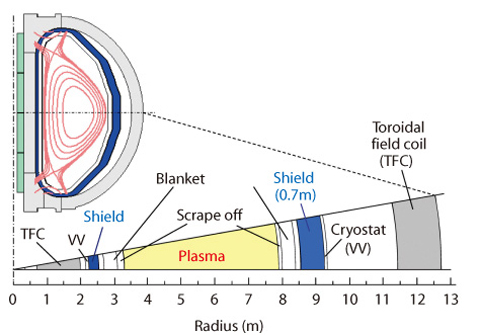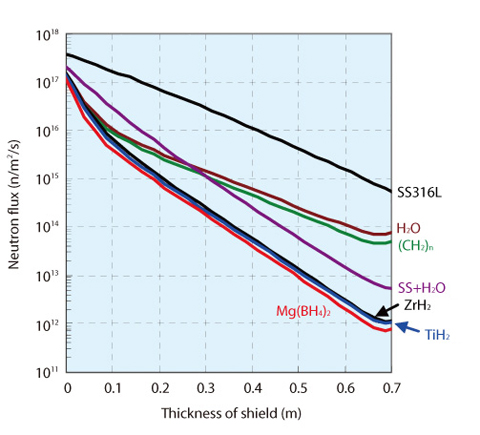Table3-1 Hydrogen density of various materials


Fig.3-26 Cross section and 1-D calculation model of a low aspect ratio tokamak reactor

Fig.3-27 Attenuations of fast neutron fluxes in 0.7 m-thick shields made from various materials
To demonstrate economical power generation with a compact reactor, the fusion DEMO studies at JAEA focus on a low aspect ratio (A) tokamak. It is important to reduce the nuclear heating caused by both neutron and gamma interactions in order to maintain the superconductive state of toroidal field coils (TFC); this is done with a compact neutron shield. Such an excellent shield also can be also used to protect outer structural materials from serious activation, and can lead to a dramatic reduction of radwaste.
This paper presents for the first time a new candidate neutron shielding material, magnesium borohydride (Mg(BH4)2), which is one of the most promising materials for storage of large amounts of hydrogen. Table3-1 gives several metal hydrides, borohydride and their properties. The anticipated hydrogen concentration of Mg(BH4)2 is as high as 13.2 × 1028 H-atoms/m3. It is notable that some hydrides have considerably higher hydrogen content than polyethylene or water.
Neutronics calculations were carried out in order to assess the capability of Mg(BH4)2 and metal hydrides such as titanium hydride (TiH2) and zirconium hydride (ZrH2) which are candidates for the new shield material. Fig.3-26 shows the poloidal cross section and a 10°sector model of the low aspect ratio tokamak.
Fig.3-27 shows the calculated attenuation of fast neutron (E>0.1 MeV) flux in outboard shields made from various materials. The mixture of SS and H2O consisting of 70% stainless steel SS316L and 30% water, which is presently one of the main shielding materials in fusion device design such as ITER, also was calculated. The thickness of a shield of Mg(BH4)2, TiH2 and ZrH2 can be respectively 23%, 20%, and 19% less than the combination of SS and water. Also, though the γ-ray shielding capability of only Mg(BH4)2 is low, mixing Mg(BH4)2 with steel significantly improves gamma-ray shielding.
The hydrogen-rich hydrides exhibit superior neutron shielding capability. Neutron transport calculations of the 0.7 m-thick outboard shields indicate that some hydrides allow the shield to be more than 20% thinner than the combination of SS and water.